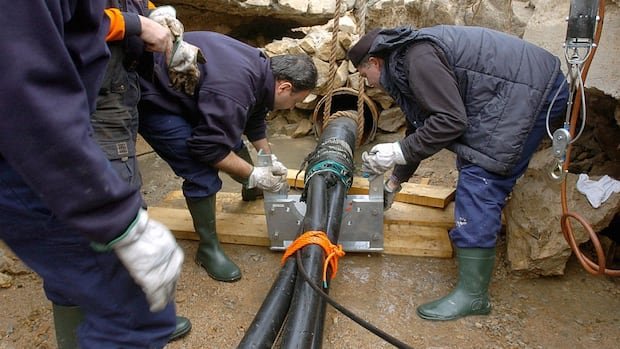A traditional game of hide-and-seek has been unfolding discreetly for nearly a year in various parts of the North Atlantic, the North Sea, and the Baltic Sea involving NATO allies and a Russian surveillance vessel. This ongoing scenario has raised concerns among European political and military leaders.
Concurrently, there have been multiple instances of damage to underwater cables over the past two years, primarily in the Baltic region. An incident in July off Orkney and Banff in the U.K. also raised questions about whether these incidents are deliberate attacks or mere accidents, prompting investigations into the matter.
There is a growing consensus that more measures need to be taken to safeguard the undersea infrastructure, which plays a vital role in the global economy.
To address these concerns, last week, Germany’s armament secretary and the head of the country’s navy visited Ottawa to discuss plans with Canadian navy and defense officials regarding the introduction of maritime drones, both on the surface and subsurface. Jens Plötner, the armament secretary, highlighted the potential for collaboration in this area.
Remotely operated underwater vehicles are considered essential for protecting underwater infrastructure, but discussions are ongoing regarding the methods and responsibilities involved. The Russian research vessel, Yantar, suspected by Western intelligence of mapping undersea cables and infrastructure, has been observed near these cables, particularly in November and December 2024, raising alarms for Finnish and Swedish authorities.
Peter Sandwell, Sweden’s state secretary of defense, also visited Ottawa recently to discuss potential threats in the Baltic Sea. Sandwell emphasized the importance of securing critical underwater infrastructure to prevent any vulnerabilities.
In response to the escalating incidents, NATO launched a mission named Baltic Sentry last January to bolster its military presence and monitor threats to underwater infrastructure. This mission was reinforced last month with the deployment of the U.S. warship, the guided missile destroyer USS Bulkeley.
The European Commissioner for Defense and Space, Andrius Kubilius, noted that the conflict in Ukraine has driven advancements in drone technology. He emphasized the need for Western countries to catch up with Ukraine and Russia in utilizing remote technology.
The Royal Canadian Navy is in the process of acquiring autonomous subsurface drones designed to detect and eliminate underwater mines. Several Canadian companies are pioneering marine drone technology, such as Seamor Marine Ltd., which produces drones for various underwater applications.
Plötner expressed concerns about the collaboration between defense and the private sector in safeguarding undersea cables and critical infrastructure. He emphasized the importance of shared responsibility between governments and private entities to ensure the security of these vital assets.
A recent report by the U.K. Parliament’s joint committee on national security strategy highlighted skepticism within the cable industry about the risks of coordinated attacks. The report stressed the need for preparedness for low-probability, high-risk scenarios, emphasizing that individual operators may lack incentives to prepare for potential crises.
Overall, there is a growing recognition of the need for enhanced protection of undersea infrastructure, with a call for closer cooperation between civilian and military entities to mitigate risks and ensure the resilience of critical underwater assets.

